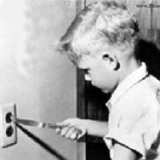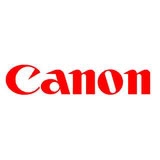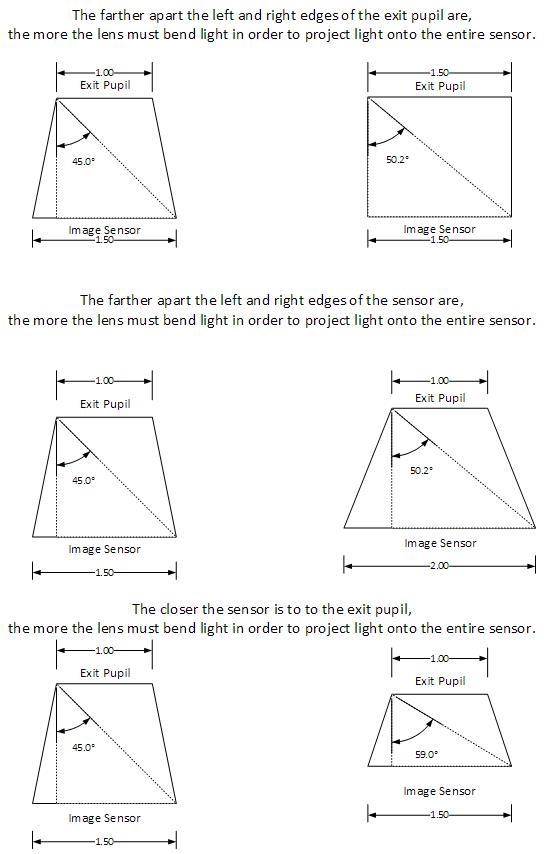- Forum
- General Discussion | Introductions | Off Topic Forum
- Photography General Discussion
- Nikon doesn't think DSLRs are dead yet?
Nikon doesn't think DSLRs are dead yet?
-
 Topic Author
Topic Author
- ThatNikonGuy
- Master of the Lens
-
- Nikon D810 & D300
- Followers: 299
- Posts: 1888
-
Points:
16120
Post #716743
-

- fmw
- Newbie
- Followers: 12
-
Points:
12122
-

- Nikon Shooter
- Oh Wise One
-
- 3S 3X 810 850
- Followers: 197
- Posts: 13795
-
Points:
88932
Post #716750
SLR. I choose the later from F, F2, F3HP, F4E to F5.
Ten years ago, dSLR has evolved to DSLR. I went for it and that
was the way to go but only when it reached the 12MP mark with
the D3S. The same year, I jumped on the D3X (24MP). Both are
still in my arsenal and the back bones of my operations.
Then the D800E, the D810 and the D850 got in my bag. The first
was sold to a student but still own two D810s and the D850.
Now comes the EVF. I approach the choice — OVF vs EVF —
the same way I did with range finder and the SLR… a possible
way to go.
At this point, EVF doesn't even rock the boat… too much to lose
taking that way at this point in its evolution. If DSLR is dying, then
I'll die with these most accomplished tools.
Light is free… capturing it is not!
-

- TCav
- The Lounger
-
- Nikon D7200. Sony A77 II. Pentax KP.
- Followers: 85
- Posts: 1035
-
Points:
31319
Post #716773
While mirrorless cameras are smaller and lighter than dSLRs, that doesn't extend to their lenses, which are just as big and heavy as their dSLR counterparts. So the size and weight advantage quickly diminishes as your collection of lenses and accessories grows. Also, the shorter Flange Focal Distance of mirrorless cameras requires their lenses to bend light more in order to project an image over the entire image sensor,
... so those lenses are more prone to vignetting, chromatic aberration, distortion, and field curvature (soft corners). That is not to say that those flaws can't be overcome, but in order to overcome them, lenses must use more advanced and more expensive designs. Thus, most mirrorless camera manufacturers opt instead to process images in the camera to "compensate" for some of those image flaws. Unfortunately, that processing often simply replaces one image flaw with another, and worse, there is no compensation for the field curvature, and the compensation for distortion actually makes the corners softer. Further, mirrorless cameras are comparatively new, as are their lenses, whereas SLRs and their autofocus lenses have been around for decades, so a new dSLR can use many of the excellent lenses available on the used market at a greatly reduced price. And while dSLR lenses can be adapted to work with mirrorless cameras, use of adapters often introduces other problems in terms of both functionality and image quality.
Another important consideration is that dSLRs have optical viewfinders, while mirrorless cameras have electronic viewfinders which usually lack an equivalent resolution. In addition, the electronic viewfinder has a built-in lag time necessary to form the image, so much so that mirrorless often just show the last image captured instead of the live image to be captured. This can be a real handicap for sports/action/wildlife shooting.
-

- Ozzie_Traveller
- Apprentice
-
- Currently using a Panny FZ-300 and FZ-2500 with occasional use of a Panny mirrorless G-series
- Followers: 124
- Posts: 2713
-
Points:
54276
Post #716778
As I have mentioned in earlier posts - after 40+ yrs with film SLRs and their OVFs, I went digital in 2003 with fixed-lens superzoom cameras with their EVFs. Back then with EVFs in their infancy, I had to have a bit of a prayer that the end result would be what I expected - and for the most part, it was
These days I am still using fixed-lens superzoom cameras and still with their EVF viewfinders - and (with no offence to my 2 mates above) I will never use a clunker OVF again ~ real crappy horse 'n buggy stuff
The EVF shows me heaps and heaps of data not possible with the OVF - and via the Display button I can alter the screen display into any of 4 options. As to response times, well I am shooting at 6fps with full auto-focus / follow-focus and live view operation. From my perspective, there would be very few occasions where the photographer would need double this fps along with full screen response .... and when that happens the dSLR camera offers (needs?) mirror lock-up and you need a second viewfinder! Better? Really?
Phil from the great land Downunder
www.flickr.com/photos/ozzie_traveller/sets/
-

- Nikon Shooter
- Oh Wise One
-
- 3S 3X 810 850
- Followers: 197
- Posts: 13795
-
Points:
88932
Post #716794
TCav wrote: Mirrorless is not a suitable substitute for dSLR… dSLRs have optical viewfinders, while mirrorless cameras have electronic viewfinders which usually lack an equivalent resolution. In addition, the electronic viewfinder has a built-in lag time necessary to form the image, so much so that mirrorless often just show the last image captured instead of the live image to be captured. This can be a real handicap for sports/action/wildlife shooting.
Light is free… capturing it is not!
-

- TCav
- The Lounger
-
- Nikon D7200. Sony A77 II. Pentax KP.
- Followers: 85
- Posts: 1035
-
Points:
31319
Post #716814
Further, a friend asked me to photograph one of her last rides on her horse that would soon be retiring. I recently hurt my left shoulder, and have been anxiously awaiting a shoulder replacement that was delayed because of the COVID lockdown, so I couldn't use my Nikon D7200/Tokina 100-300 F4 combo (~7.5 lbs that I must hold with my left hand), so I had to use my Sony A77 II/Minolta 70-210 F4 combo(~4 lbs that I can support with the strap). I rarely shoot anything faster than 3 fps, so I was disappointed when I found that as bursts got longer, the subject creeped further out of the frame.
And, btw, another favorite pastime of mine is shooting airshows in and around the Washington DC area, and using an optical viewfinder is the only way to go for that. The subjects just move way too fast to trust an electronic viewfinder to frame a shot.
-

- Nikon Shooter
- Oh Wise One
-
- 3S 3X 810 850
- Followers: 197
- Posts: 13795
-
Points:
88932
Post #716816
TCav wrote: I recently hurt my left shoulder…
Sorry to read that.
Though I have no problem with my upper members, I had a domestic
accident that got me limping since. So I can carry all my DSLR gear
all day… but not everywhere and not very fast.
Light is free… capturing it is not!
-

- fmw
- Newbie
- Followers: 12
-
Points:
12122
Post #716833
-

- Farestad
- Snapobsessed
-
- Canon 1D Mark II
- Followers: 92
- Posts: 376
-
Points:
2543
-

- TCav
- The Lounger
-
- Nikon D7200. Sony A77 II. Pentax KP.
- Followers: 85
- Posts: 1035
-
Points:
31319
Post #717026
fmw wrote: ... I sense no difference at all in viewfinder "resolution." ...
A person with normal visual acuity (20/20 vision) can detect detail as small as 1 arc minute (1/60th degree).
Eye-level viewfinders are spec'd with the magnification, coverage, and the angle of view of a 50mm lens focused at infinity.
Nikon's Mirrorless 'Full Frame' bodies all have magnifications of 0.80x, 100% coverage, and a 39.6° horizontal angle of view, which would result in a horizontal resolution of 1900 arc minutes through an optical viewfinder for a person with normal visual acuity. Unfortunately, the electronic viewfinder Nikon has a horizontal resolution of only 1400. Therefore, the electronic viewfinder isn't as sharp as an optical viewfinder would be.
Canon's top-of-the-line Mirrorless 'Full Frame' R5 body has a magnification of 0.76x, 100% coverage, and a 35.5° horizontal angle of view, which would result in a horizontal resolution of 1619 arc minutes through an optical viewfinder. Canon's R5 happens to have an electronic viewfinder with a horizontal resolution of 1600, very close to what an optical viewfinder in a body with the same specs would have. Canon has other Mirrorless 'Full Frame' bodies, but the specs give no indication of the resolution of the electronic viewfinder.
Fujifilm's Mirrorless APS-C X Pro3, which has both optical and electronic viewfinders, but with very different specs. The optical viewfinder has a magnification of 0.52x, 95% coverage and a horizontal angle of view of 27°, resulting in a horizontal resolution of 900 arc minutes. The Electronic viewfinder has a magnification of 0.66x, 100% coverage, and the same 27° horizontal angle of view, which would result in a resolution of 1069 arc minutes for an optical viewfinder, but the X Pro3's electronic viewfinder has a horizontal resolution of 1400, surpassing the resolution necessary to render detail discernible by a person with normal visual acuity. FujiFilm's other Mirrorless APS-C bodies do too, though not to the same level as the X Pro3.
My own APS-C Sony A77 II has 0.71x magnification, 100% coverage, and a 27° angle of view, which would result in a horizontal resolution of 1150 arc minutes with an optical viewfinder, but its electronic viewfinder only has a resolution of 1024, falling short of the detail a person with normal visual acuity could see through an optical viewfinder.
On a personal note, I happen to be farsighted with a visual acuity of 20/15, so this is frustrating for me, and is why I frequently choose my Nikon D7200 or my Pentax KP for certain applications.
FYI, all the specs I quoted here are direct from the respective manufacturer's websites.
-

- Nikon Shooter
- Oh Wise One
-
- 3S 3X 810 850
- Followers: 197
- Posts: 13795
-
Points:
88932
Post #717037
fmw wrote: I have never experienced any EVF lag.
That suggests you're shooting only — or near to — static subjects?
Light is free… capturing it is not!
-

- TCav
- The Lounger
-
- Nikon D7200. Sony A77 II. Pentax KP.
- Followers: 85
- Posts: 1035
-
Points:
31319
-

- TCav
- The Lounger
-
- Nikon D7200. Sony A77 II. Pentax KP.
- Followers: 85
- Posts: 1035
-
Points:
31319
Post #717105
TCav wrote: Nikon's Mirrorless 'Full Frame' bodies all have magnifications of 0.80x, 100% coverage, and a 39.6° horizontal angle of view, which would result in a horizontal resolution of 1900 arc minutes through an optical viewfinder for a person with normal visual acuity. Unfortunately, the electronic viewfinder Nikon has a horizontal resolution of only 1400. Therefore, the electronic viewfinder isn't as sharp as an optical viewfinder would be.
CORRECTION: Nikon's Mirrorless 'Full Frame' bodies all use electronic viewfinders with horizontal resolutions of 1280, not 1400, so the resolution of their electronic viewfinders is WAY less than would be available with an optical viewfinder.
Addendum: Sony's Mirrorless 'Full Frame' bodies also have electronic viewfinders whose resolution falls WAY short of what an optical viewfinder would provide, including the A1, A7R IV and A7S III, though they're closer than its stablemates, including the APS-C A6X00 bodies.
-

- TCav
- The Lounger
-
- Nikon D7200. Sony A77 II. Pentax KP.
- Followers: 85
- Posts: 1035
-
Points:
31319
- Forum
- General Discussion | Introductions | Off Topic Forum
- Photography General Discussion
- Nikon doesn't think DSLRs are dead yet?
Latest Reviews
The Olympus Pen E-P7 is an affordable micro four thirds mirrorless camera with 4K video capabilities, a 20.3MP sensor, and 121 focus points, making it a solid entry-level camera for beginners.
The Panasonic G9 II is a 25.2-megapixel micro four thirds camera with numerous features that make it punch out of its weight class, like 779 AF points, 5.8K video, and weather sealing.
The Fujifilm XT5 is a 40MP mirrorless camera capable of 6.2K video at 30p. With those specs, it’s an ideal choice for photographers needing a camera to pull double duty for imaging and video.
The Canon EOS R100 is an entry-level mirrorless camera introduced in 2023. But just because it’s an entry-level camera doesn’t mean it’s a bare-bones camera. Find out why in this review!
Forum Top Posters
-
1Scotty 9 posts
-
2Roman Omell 4 posts
-
3Razky 4 posts
-
4Pat White 3 posts
-
5CharleyL 3 posts
-
6ShutterPal 3 posts
-
7Ruby Grace 3 posts
-
8Roger Lang 3 posts
-
9Nefarious 3 posts
-
10Jim Photo 3 posts
Latest Articles
Upgrade your kit in 2024 with the best intermediate camera on the market! The question is, what camera fits the bill? We’ve got three top options for you to choose from in this buyer’s guide.
The best photography jobs right now are a mix of tried-and-true gigs like wedding photography and new jobs highlighting AI’s capabilities, travel, and videography.
The Olympus Pen E-P7 is an affordable micro four thirds mirrorless camera with 4K video capabilities, a 20.3MP sensor, and 121 focus points, making it a solid entry-level camera for beginners.
Starting a photography business is one thing; sustaining your business over a long period of time is another. Use the tips in this professional photography guide to build something with longevity!
The Panasonic G9 II is a 25.2-megapixel micro four thirds camera with numerous features that make it punch out of its weight class, like 779 AF points, 5.8K video, and weather sealing.
Cinematic photography is an interesting genre that combines photographic and videographic skills along with effective storytelling techniques. The result? Highly impactful images!
Newborn photography requires skill, the right gear, and a lot of patience. This beginner’s guide discusses critical topics that will help you be more prepared for before, during, and after the shoot.
To fill the frame means to expand the footprint of the subject in your shot. Get in close, zoom in, crop the image, or use other techniques to bring the subject to the forefront.

















